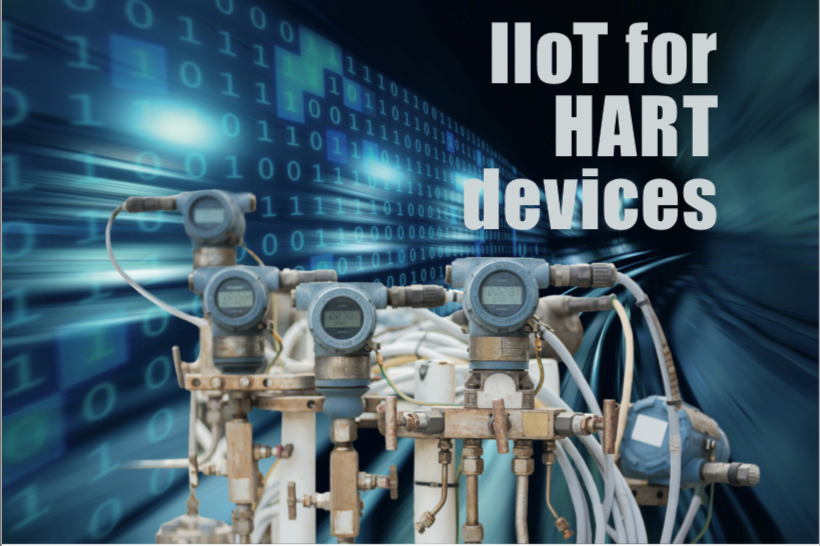|
Intelligent field devices installed in modern process industry plants, such as temperature sensors, pressure meters, level sensors and flow meters, can provide plant operators with solid plant health information. ▪ Author: Thomas Schwarzenboeck, Product Manager, Softing Industrial Automation ▪ Images: Softing Industrial Automation GmbH, Shutterstock.com Data from the field directly to the tablet To monitor and optimize manufacturing processes, an operations team uses analysis tools distributed via the cloud. All information from the field devices, such as asset management, diagnostic and process data, is stored there in real time. Monitoring is visualized by means of a web interface and accessed via browsers preinstalled on tablets. No advance configuration, such as the installation of special apps, is necessary. The tablets are ready for use immediately. All data can be accessed in real time via an intuitive user interface. Maintenance personnel therefore has a clear and comprehensive overview of aggregated information at all times, and can use this to make informed decisions that speed up troubleshooting. This is just one of the many possible application scenarios based on the pillars of Industrie 4.0 and IIoT. Growing volumes of data are being exchanged by networked devices from a variety of manufacturers. Users and operators can benefit from this, and they don’t even need to become specialists in industrial communication to do so. |
| Copyright © 2020 Softing Industrial. All rights reserved. |
| The current state of integration technologies Due to the large number of proprietary solutions, various organizations and institutions quickly recognized the need for standardization and developed integration technologies and techniques for data delivery based on open, protocol- and vendor-independent architectures that would provide seamless interoperability and integration flexibility. Unfortunately, they were not able to agree on a universal solution. Today, users can choose from the following integration technologies, each of which has adopted a different approach: EDD (Electronic Device Description) – a textual device description file FDT/DTM (Field Device Tool, Device Type Manager) – a device driver with an integrated user interface All of these technologies have one thing in common: they are based on the traditional automation pyramid and are not transparent at all levels. The data is collected from field devices via fieldbus or HART and converted in the SCADA level for use by applications. These technologies are based on software products that must always be installed on terminal equipment in order to establish a connection. There is no provision for further machine processing of the data. If any further processing is required, it can be done using specially adapted software, but this is certainly not standard. The conventional automation structure is often depicted as a pyramid with four layers. This structure has proven itself over many years and offers a high level of operational reliability. On the other hand, it is not very flexible or open to the innovations and new technologies of the Internet of Things and Industrie 4.0. Namur Open Architecture (NOA) extends the existing structure by providing additional open interfaces. These also make the data from field devices and controllers available for higher-level monitoring and optimization. |
| Copyright © 2020 Softing Industrial. All rights reserved. |
NOA – NAMUR Open Architecture
With Smartlink DP, Softing offers a NOA-compliant gateway
Implementing the Namur Open Architecture
Devices make the open NOA interface available at various levels of the automation structure. The interface is based on OPC UA and uses a standardized information model (NOA Information Model). Using an embedded OPC UA server, this information model can be implemented by a remote I/O system, for example, a gateway or, in the future, directly by field devices with an Ethernet connection. For security reasons, access to the data should be read-only. The NOA diode ensures that this is the case.
With its smartLink DP, Softing offers a NOA-compliant gateway that collects data from HART devices via PROFIBUS remote I/Os and makes it available via OPC UA in accordance with the companion specification. In connection with a dataFEED secure integration server, which delivers the data unilaterally to the outside world, Softing already offers the functionality of a NOA diode.
Moreover, a HART-IP server integrated into the smartLink DP provides transparent access to HART field devices via Ethernet. In the future, it will be possible to use any HART-IP client, such as Emerson’s AMS Device Manager or ProComSol’s Android app DevComDroid, to parameterize, monitor and evaluate HART field devices via this open communication standard.
In partnership with NAMUR and ZVEI, a demonstrator for the application case described was set up at Namur’s Annual General Meeting from November 7 – 8, 2019. The smartLink DP Gateway is scheduled for release in April 2020.
Original article by Softing: https://industrial.softing.com/fileadmin/sof-files/pdf/ia/articles/2019/smartLink_DP_IIoT_for_HART_Devices_EN.pdf



